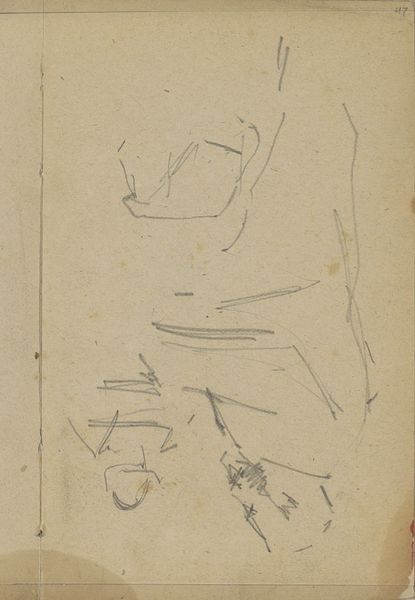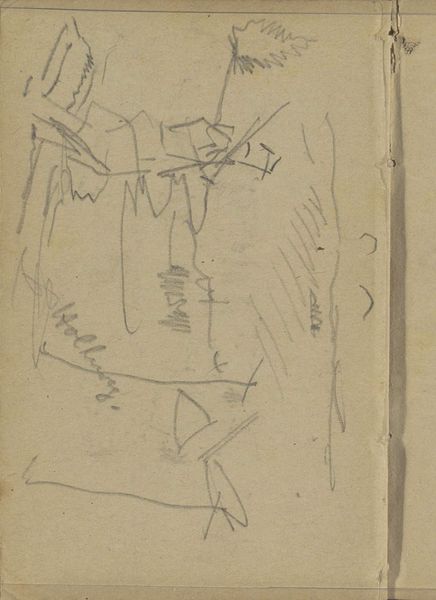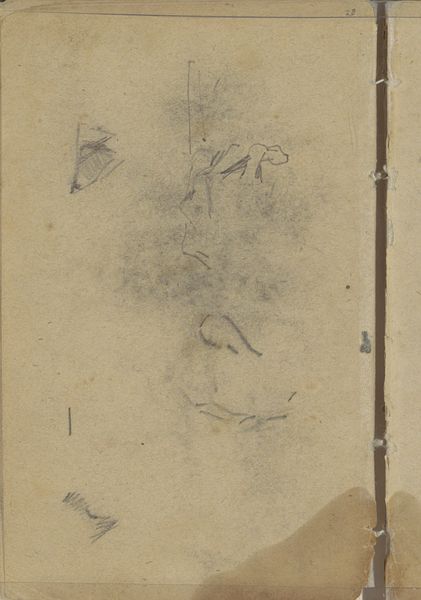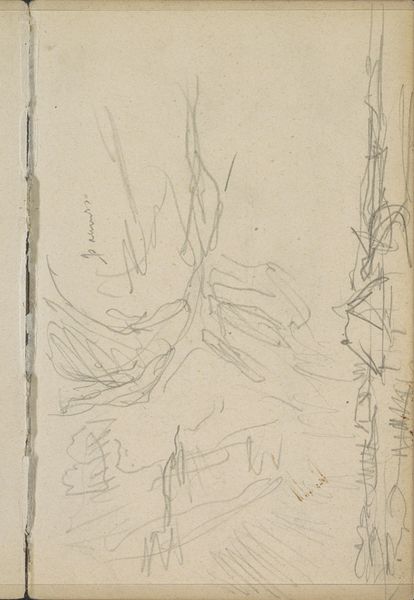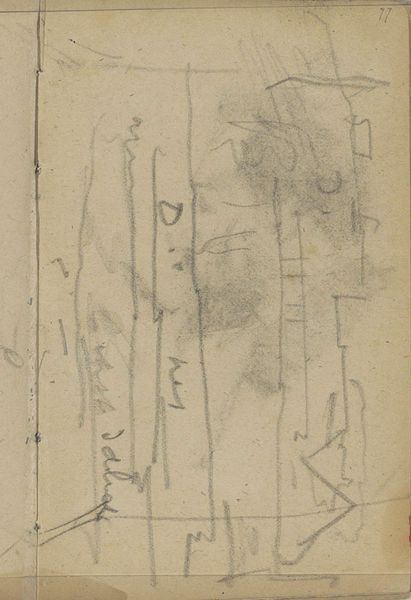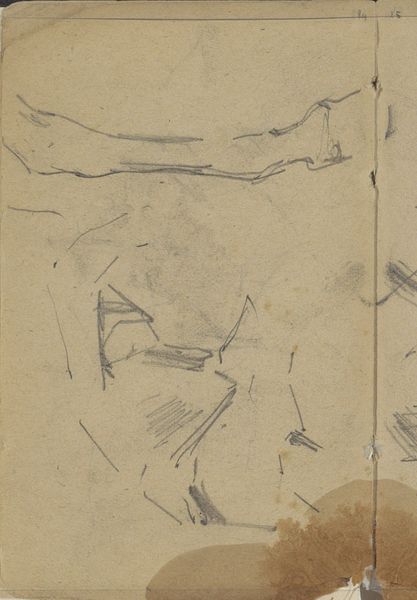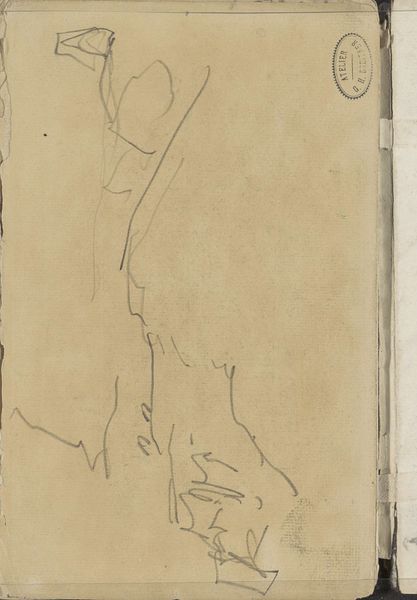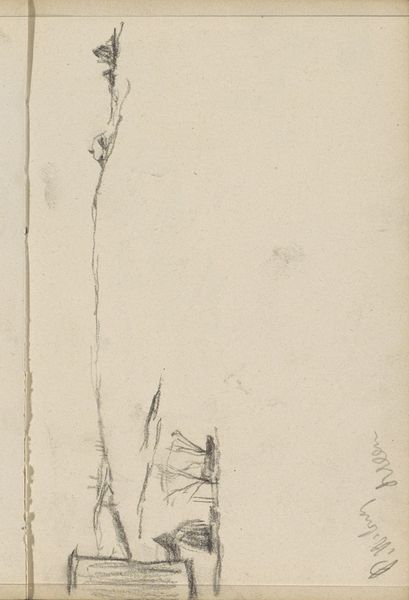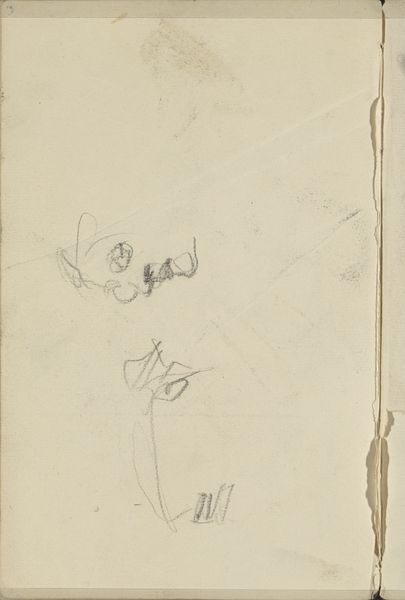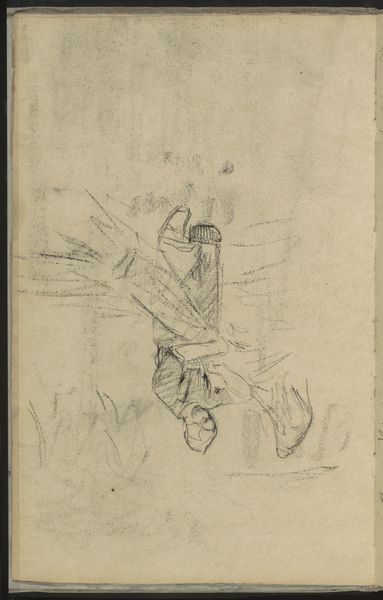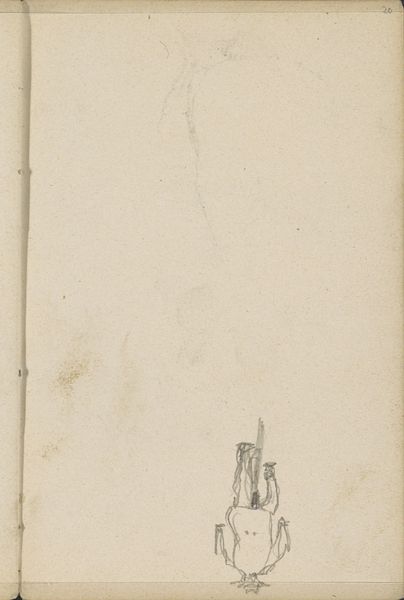
drawing, pencil
#
drawing
#
impressionism
#
landscape
#
figuration
#
pencil
Copyright: Rijks Museum: Open Domain
Curator: Breitner's study, tentatively titled 'Study, possibly of a landscape with horses,' dating from 1887-1891, is a remarkable example of the artist's sketch work in pencil, now held at the Rijksmuseum. Editor: My first impression is one of ephemeral energy. The lines feel incredibly immediate and gestural, capturing movement more than solid form. The horses, if that’s indeed what they are, seem to be dissolving into the landscape itself. Curator: Yes, it's a study, which underscores the significance of process in understanding Breitner's working methodology. This piece, with its material simplicity – pencil on paper – speaks volumes about the accessibility and immediacy of artistic creation. Consider also, that these sketches would have been a functional stage in his process toward other work. Editor: Absolutely. We must think about the role horses played in the late 19th century – both practically and symbolically. They were crucial for transportation and labor, yes, but also signified status and power. Breitner's landscapes frequently included working-class life, so the horses were very much part of the urban experience he captured. Who did the horse belong to? What did that suggest about social structures at the time? Curator: Indeed, although he's also known to include them at leisure in his later impressionistic pieces. It's easy to forget that pencils at this time would have been created in factories. Editor: The seeming fragility of the drawing – the lightness of touch, the impermanence of pencil – creates a tension. These were sketches that served a utilitarian purpose that would later become treasured on the wall of the museum, far beyond their function or intent when produced. How might a work such as this contribute to larger discussions of labor value, and social stratification? Curator: I am not so sure there is a need for such deep reading. I see it more as the practical materiality of the artistic practice – as well as capturing that impressionistic movement in material and in its own artistic journey towards further works. Editor: A thought-provoking dialogue around Breitner’s study. Considering the role that labor, status and value have played in its history allows us to see art through a contemporary and engaged lens. Curator: True enough! And appreciating how this rough, straightforward material has been a tool for art history leaves us thinking about the artist’s process.
Comments
No comments
Be the first to comment and join the conversation on the ultimate creative platform.
